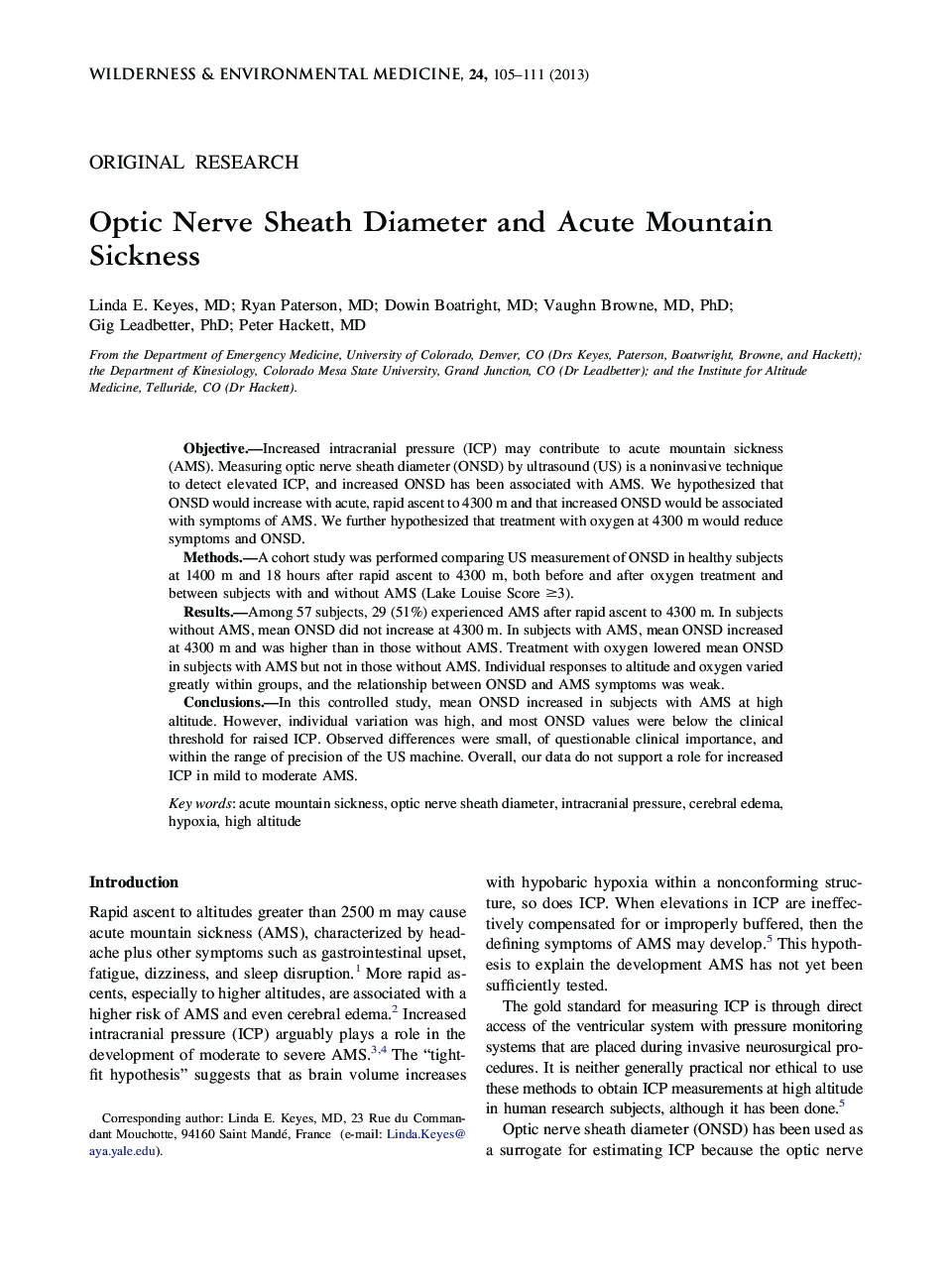| Article ID | Journal | Published Year | Pages | File Type |
|---|---|---|---|---|
| 2614873 | Wilderness & Environmental Medicine | 2013 | 7 Pages |
ObjectiveIncreased intracranial pressure (ICP) may contribute to acute mountain sickness (AMS). Measuring optic nerve sheath diameter (ONSD) by ultrasound (US) is a noninvasive technique to detect elevated ICP, and increased ONSD has been associated with AMS. We hypothesized that ONSD would increase with acute, rapid ascent to 4300 m and that increased ONSD would be associated with symptoms of AMS. We further hypothesized that treatment with oxygen at 4300 m would reduce symptoms and ONSD.MethodsA cohort study was performed comparing US measurement of ONSD in healthy subjects at 1400 m and 18 hours after rapid ascent to 4300 m, both before and after oxygen treatment and between subjects with and without AMS (Lake Louise Score ≥3).ResultsAmong 57 subjects, 29 (51%) experienced AMS after rapid ascent to 4300 m. In subjects without AMS, mean ONSD did not increase at 4300 m. In subjects with AMS, mean ONSD increased at 4300 m and was higher than in those without AMS. Treatment with oxygen lowered mean ONSD in subjects with AMS but not in those without AMS. Individual responses to altitude and oxygen varied greatly within groups, and the relationship between ONSD and AMS symptoms was weak.ConclusionsIn this controlled study, mean ONSD increased in subjects with AMS at high altitude. However, individual variation was high, and most ONSD values were below the clinical threshold for raised ICP. Observed differences were small, of questionable clinical importance, and within the range of precision of the US machine. Overall, our data do not support a role for increased ICP in mild to moderate AMS.
